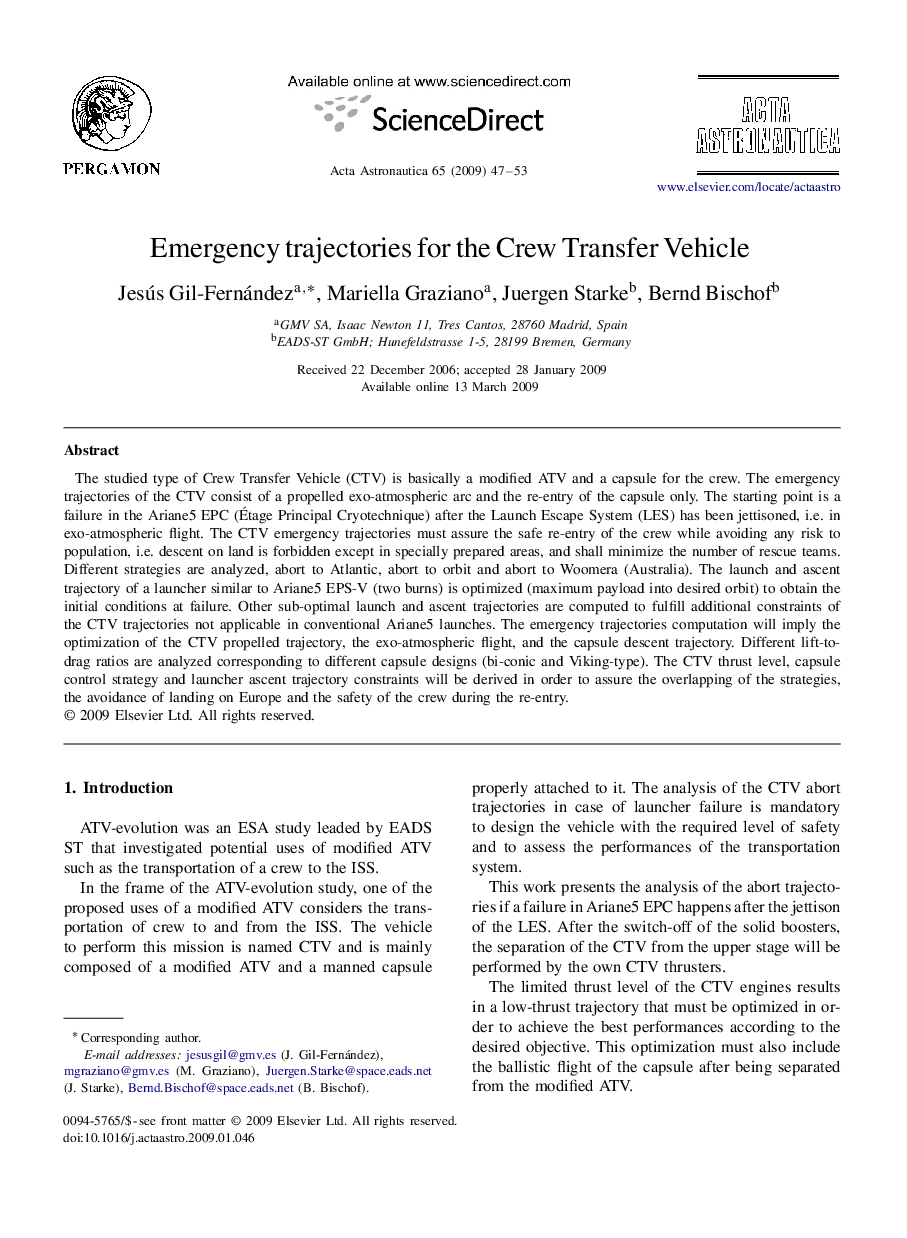| کد مقاله | کد نشریه | سال انتشار | مقاله انگلیسی | نسخه تمام متن |
|---|---|---|---|---|
| 1716329 | 1520008 | 2009 | 7 صفحه PDF | دانلود رایگان |

The studied type of Crew Transfer Vehicle (CTV) is basically a modified ATV and a capsule for the crew. The emergency trajectories of the CTV consist of a propelled exo-atmospheric arc and the re-entry of the capsule only. The starting point is a failure in the Ariane5 EPC (Étage Principal Cryotechnique) after the Launch Escape System (LES) has been jettisoned, i.e. in exo-atmospheric flight. The CTV emergency trajectories must assure the safe re-entry of the crew while avoiding any risk to population, i.e. descent on land is forbidden except in specially prepared areas, and shall minimize the number of rescue teams. Different strategies are analyzed, abort to Atlantic, abort to orbit and abort to Woomera (Australia). The launch and ascent trajectory of a launcher similar to Ariane5 EPS-V (two burns) is optimized (maximum payload into desired orbit) to obtain the initial conditions at failure. Other sub-optimal launch and ascent trajectories are computed to fulfill additional constraints of the CTV trajectories not applicable in conventional Ariane5 launches. The emergency trajectories computation will imply the optimization of the CTV propelled trajectory, the exo-atmospheric flight, and the capsule descent trajectory. Different lift-to-drag ratios are analyzed corresponding to different capsule designs (bi-conic and Viking-type). The CTV thrust level, capsule control strategy and launcher ascent trajectory constraints will be derived in order to assure the overlapping of the strategies, the avoidance of landing on Europe and the safety of the crew during the re-entry.
Journal: Acta Astronautica - Volume 65, Issues 1–2, July–August 2009, Pages 47–53